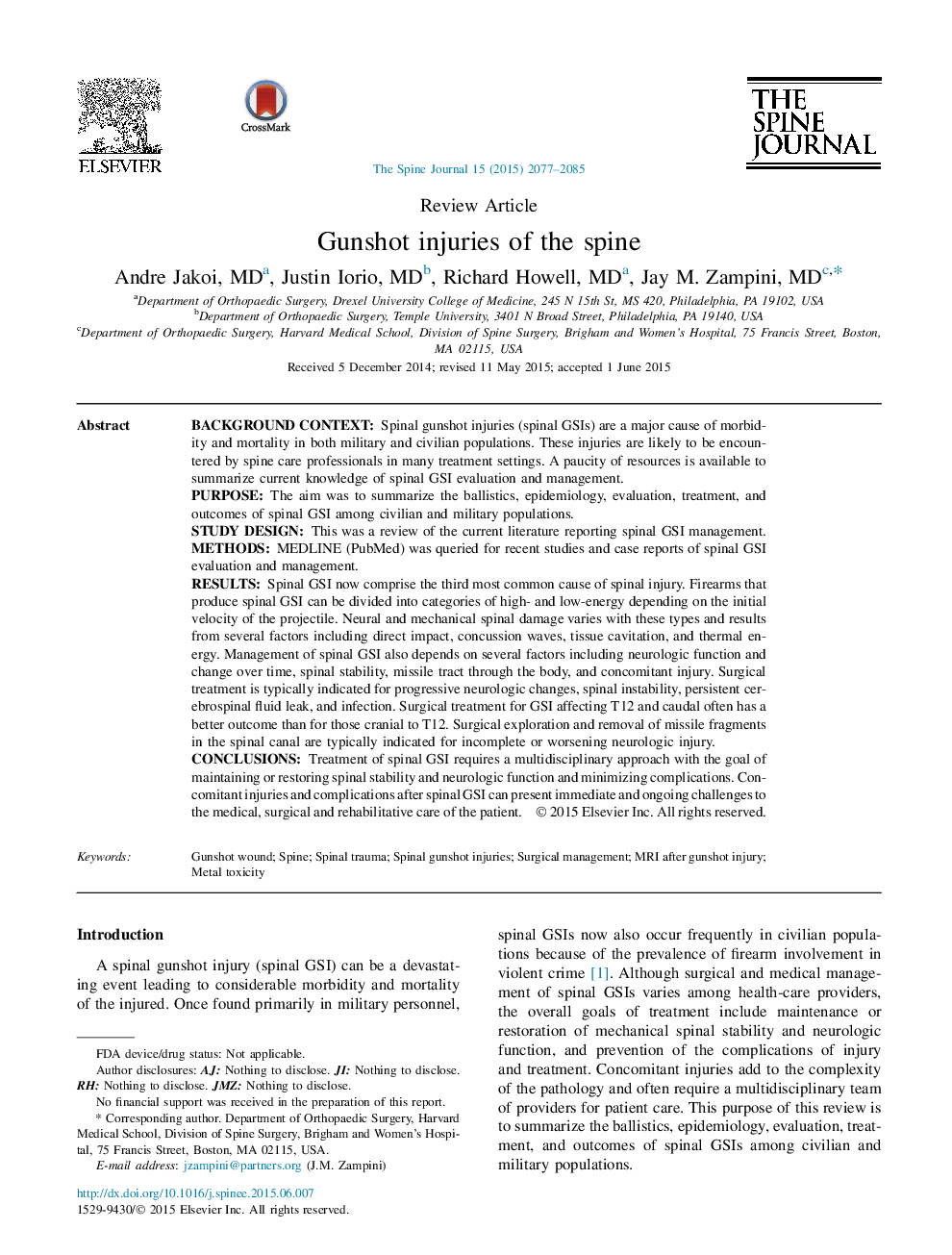| کد مقاله | کد نشریه | سال انتشار | مقاله انگلیسی | نسخه تمام متن |
|---|---|---|---|---|
| 6212302 | 1268576 | 2015 | 9 صفحه PDF | دانلود رایگان |
Background contextSpinal gunshot injuries (spinal GSIs) are a major cause of morbidity and mortality in both military and civilian populations. These injuries are likely to be encountered by spine care professionals in many treatment settings. A paucity of resources is available to summarize current knowledge of spinal GSI evaluation and management.PurposeThe aim was to summarize the ballistics, epidemiology, evaluation, treatment, and outcomes of spinal GSI among civilian and military populations.Study designThis was a review of the current literature reporting spinal GSI management.MethodsMEDLINE (PubMed) was queried for recent studies and case reports of spinal GSI evaluation and management.ResultsSpinal GSI now comprise the third most common cause of spinal injury. Firearms that produce spinal GSI can be divided into categories of high- and low-energy depending on the initial velocity of the projectile. Neural and mechanical spinal damage varies with these types and results from several factors including direct impact, concussion waves, tissue cavitation, and thermal energy. Management of spinal GSI also depends on several factors including neurologic function and change over time, spinal stability, missile tract through the body, and concomitant injury. Surgical treatment is typically indicated for progressive neurologic changes, spinal instability, persistent cerebrospinal fluid leak, and infection. Surgical treatment for GSI affecting T12 and caudal often has a better outcome than for those cranial to T12. Surgical exploration and removal of missile fragments in the spinal canal are typically indicated for incomplete or worsening neurologic injury.ConclusionsTreatment of spinal GSI requires a multidisciplinary approach with the goal of maintaining or restoring spinal stability and neurologic function and minimizing complications. Concomitant injuries and complications after spinal GSI can present immediate and ongoing challenges to the medical, surgical and rehabilitative care of the patient.
Journal: The Spine Journal - Volume 15, Issue 9, 1 September 2015, Pages 2077-2085
